Table of contents
- Airbag systems for motorcyclists Eight providers at a glance
- Electronic control is located directly in the airbag vest
- Simple airbag systems cost valuable time
- That is what airbags are supposed to protect
- The release technology
- Alpinestars Tech-Air
- Bering Protect Air
- Dainese D-Air street
- Hero Air Vest
- Helite Turtle
- Hit air airbag system
- Moto airbag MAB V-2.0
- Spidi Neck DPS
- Alpinestars Tech-Air Racing
- Dainese D-Air Racing
- Interview with Ruprecht Muller / ADAC
- Conclusion
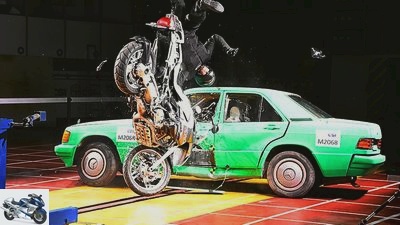
Alpinestars
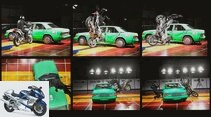
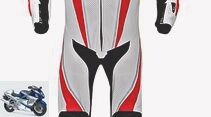
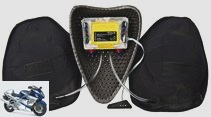
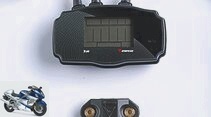
18th pictures
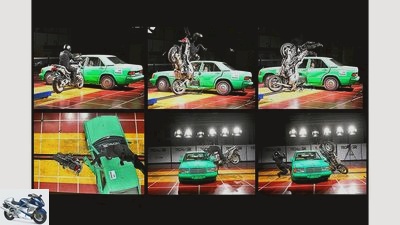
Photos: alpinestars
1/18
More than just (hot) air: airbags can prevent greater damage to life and limb in the event of an accident. Chest, neck, shoulders and back: These are essentially the areas of the body where an airbag is supposed to minimize the severity of injuries in the event of a fall.
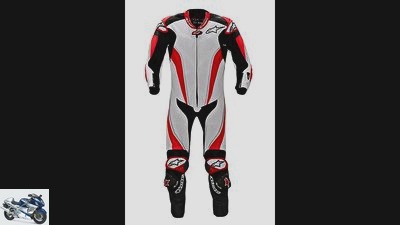
plant
2/18
Airbag for the racetrack I: Alpinestars Tech-Air Racing – Conclusion: Professional material tailored purely to the racetrack, with which MotoGP riders are also out and about.
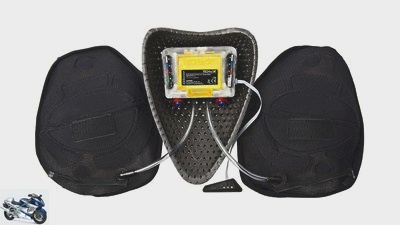
plant
3/18
Release technology Integrated control:
In professional racing, airbag combinations from Alpinestars and Dainese have now become established, in which the control electronics and pyrotechnic trigger unit are in the suit. Various sensors and complex software must ensure that an accident is detected in good time. Alpinestars is now offering this release system to road riders for the first time.
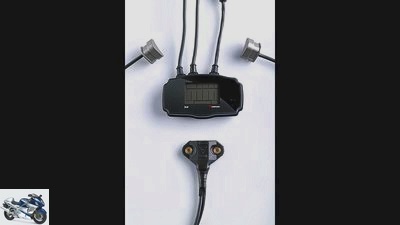
plant
4/18
Triggering technology transmitter / receiver:
In the case of the newer generation of airbags, the motorcycle is wired to a transponder. If the control module detects an accident scenario, the airbag in the driver’s clothing, which is connected wirelessly to the system, is triggered by cold gas generators (Bering, Dainese). This means that the airbag can also be triggered in the event of a collision where the driver and motorcycle do not initially separate. Ducati also offers the Multistrada with the Dainese airbag as an option.

plant
5/18
Release technology rip cord:
The most favorable principle for triggering an airbag housed in clothing. A spiral cable is firmly connected to the motorcycle. If the driver separates from the vehicle in an accident, a CO2 cartridge (left in the picture) is unlocked and compressed gas flows into the air chamber. ADAC crash tests showed that tightening the leash wasted valuable time.
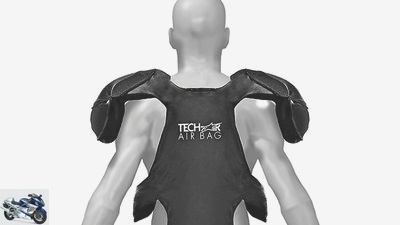
plant
6/18
Shoulders / back: It is still questionable what decisive advantages an airbag brings in these areas. However, in combination with well-cushioned protectors, new records could be set for the protection of bones and joints.
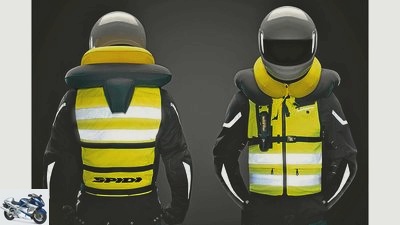
plant
7/18
Neck / Neck: Experts urgently recommend adequate protection for this sensitive area. This is hardly possible with conventional protectors, rally / motocross drivers rely on solid neck ruffs. The airbag could be a sensible alternative.

plant
8/18
Breast: So far, conventional protection systems have been criminally neglected. The chest protector standard (EN 1621-3) is currently still in the pipeline. It is currently unclear whether it will be adopted in 2015. However, a well-made airbag could provide an effective crumple zone.
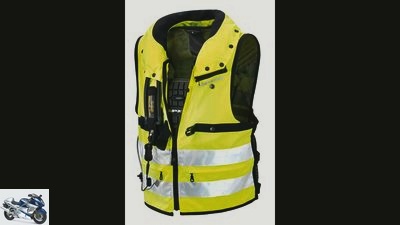
plant
9/18
Spidi Neck DPS – Conclusion: Spidi’s airbag vest focuses on protecting and stabilizing the neck. Above all, it is intended to counteract an overstretching or compression of the cervical spine. However, with this mechanically controlled airbag unit, too, time reductions have to be accepted. Other important body regions such as the chest or back are completely left out and have to be protected conventionally.
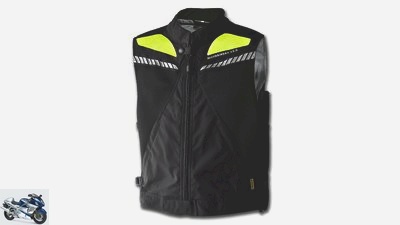
plant
10/18
Motoairbag MAB V-2.0 – Conclusion: The Motoairbag vest with its extensive back and thorax air cushioning meets the current airbag protector standard EN 1621-4, but like all other rip cord systems, this vest does not achieve the response time of electronically controlled airbags.
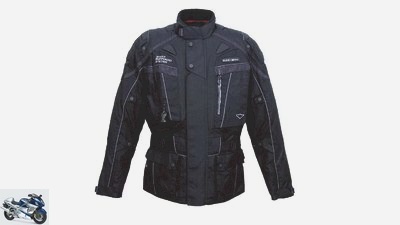
plant
11/18
Hit Air Airbag System – Conclusion: Lush air cushion that reaches down from the cervical spine to the tailbone. However, with the purely mechanically controlled system, significant time reductions have to be accepted.
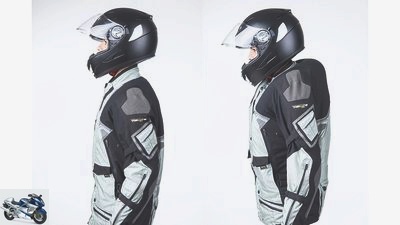
plant
12/18
…long tripping time.
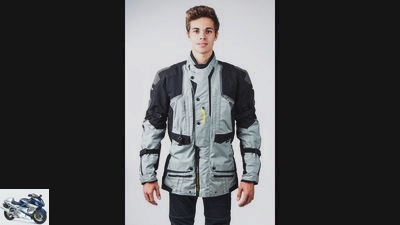
plant
13/18
Helite Turtle – Conclusion: Extensive airbag collection with extensive padding, but…
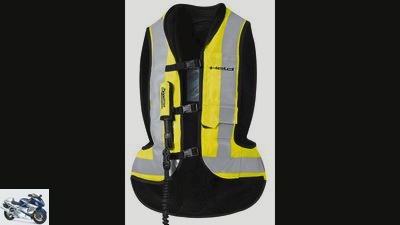
plant
14/18
Held Air Vest – Conclusion: Extensive air cushioning, the purely mechanical activation of which takes a very long time compared to electronic systems.
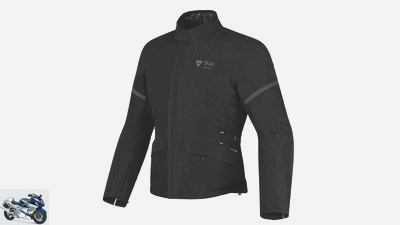
plant
15/18
Dainese D-Air Street – Conclusion: Elaborate initial installation on the motorcycle, expensive overall package. It offers extensive protection and a fast response time.
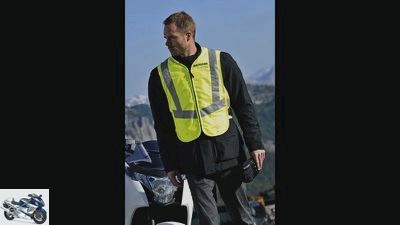
plant
16/18
Bering Protect Air – Conclusion: Complex installation, but should remain under 1000 euros as a complete set. Fast release time.
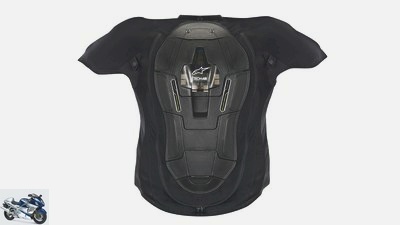
plant
17/18
Alpinestars Tech-Air – Conclusion: Easy to use and quick response time. Offers little protection for the neck / neck area.
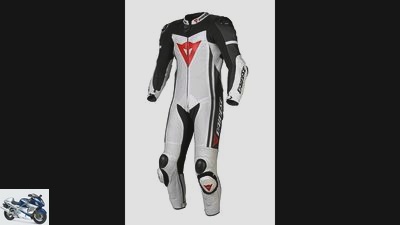
plant
18/18
Airbag for the racetrack II: Dainese D-Air Racing – Conclusion: Airbag system tailored to typical racing crashes – ideal for amateur athletes, but not on the street.
counselor
technology & future
Buying advice for airbag systems for motorcyclists
Airbag systems for motorcyclists
Eight providers at a glance
What to do if it crashes Now that the motorcycle airbag has established itself in professional racing, road riders can now increasingly rely on the extra protection provided by an airbag on their body. Eight airbag providers at a glance.
Jorg Lohse
01/22/2015
“Tell me what kind of accident you are planning and I will tell you what to wear …” That is the somewhat provocative answer of the renowned accident researcher and biomechanic Florian Schueler to the question of which motorcycle clothing is the safest. The debate about it is probably as old as the motorcycle itself. How does the driver of a high-speed means of transport protect himself without a crumple zone, seat belt, airbag …? Wait, the airbag has now achieved a certain status when it comes to safety in the event of an accident.
Buy complete article
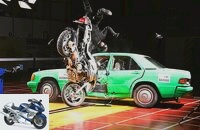
Airbag systems for motorcyclists
Eight providers at a glance
4 pages) as PDF
€ 2.00
Buy now
However, these are not vehicle-related, but driver-related systems. Only Honda has tried to anchor an airbag on the motorcycle so far. The touring flagship Gold Wing is currently the only model that is equipped with a full-size airbag as standard. All other systems that are currently available are worn as a piece of clothing and enclose the driver in an airbag as soon as the triggering device detects an accident. The most recent system comes from Alpinestars and was presented in a particularly impressive way at the EICMA motorcycle trade fair.
Electronic control is located directly in the airbag vest
Place of the event: the CSI test center in Milan. A live demonstration of a crash test is intended to demonstrate how mature airbag technology has become. A broken 190 Mercedes is on the test track when a BMW R 1200 GS plus dummy hits the side door without braking at 50 km / h. The actual sequence of the accident can hardly be grasped by the human eye in this extremely short period of time. Only the subsequent analysis of the high-speed recordings makes it clear in which fractions of a second adequate rescue systems have to react.
In the case of this not at all unusual side impact, the motorcycle dummy touches the roof edge of the car for well under 100 milliseconds. The trigger mechanism for the airbag must react accordingly quickly. In the new Tech-Air system from Alpinestars, the electronic control is housed directly in the airbag vest, which is worn under conventional protective clothing. Within 70 milliseconds, the manikin’s torso is completely enveloped by a bulging air cushion – in this case in good time before hard contact with an obstacle. Such a system has not yet existed for road use.
In motorcycle road racing, electronically controlled airbag systems that work independently of the motorcycle are now widespread. Dainese was the pioneer. Accident scenarios are to be recognized via sensors in the leather suit so that the airbag is triggered in good time. For this purpose, the control unit must be fed with a large number of parameters in order to distinguish a crash from a normal driving situation in racing. Actually no easy exercise, but the advantage is that the development teams can access an immense amount of data that was recorded, so to speak, in real time during the motorcycle races. This helps with system programming. However, there is nothing comparable for the accident scenarios in normal road traffic.
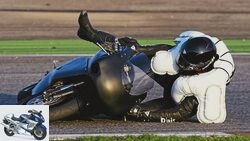
clothing
Buying advice: personal protective equipment for bikers
This should be taken into account with motorcycle protective clothing
read more
Simple airbag systems cost valuable time
The simplest airbag systems are now 15 years old. They are triggered purely mechanically using a rip cord. The disadvantages are obvious. Because preloading costs valuable time in a crash. Just like filling with a CO2 cartridge, which, depending on the airbag volume, can take up to 100 milliseconds. Electronically supported systems that are filled using gas generators usually do this in a quarter of the time. In other words, a level that is also standard for car airbags.
In conclusion, the question remains: does it also protect? Florian Schueler, mentioned at the beginning, makes clear the dilemma that lies in motorcycle accidents: Because of their diversity, they are difficult to illustrate. The situation in the car is relatively clear: the airbag brakes the forward movement of the occupants (ideally buckled up) and immediately collapses again. In motorcycle accidents, the question remains of when, where and how the pilot hits an obstacle. And how the airbag can actually cushion the impact. When it comes to damping, an airbag that is simply filled to the brim cannot compete with modern motorcycle protectors, which now manage to distribute the force over a comparatively long period of time in such a way that as little residual force as possible is transmitted to the body. Nonetheless, there are some parts of the body such as the cervical spine or the chest that have not been adequately protected so far and where an airbag can still provide valuable services.
That is what airbags are supposed to protect
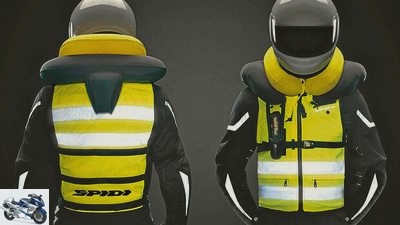
plant
Neck / Neck: Experts urgently recommend adequate protection for this sensitive area. This is hardly possible with conventional protectors, rally / motocross drivers rely on solid neck ruffs. The airbag could be a sensible alternative.
Chest, neck, shoulders and back: These are essentially the areas of the body where an airbag is supposed to minimize the severity of injuries in the event of a fall. However, there is still no reliable medical knowledge of how an airbag actually helps.
Chest: So far it has been criminally neglected by conventional protection systems. The chest protector standard (EN 1621-3) is currently still in the pipeline. It is currently unclear whether it will be adopted in 2015. However, a well-made airbag could provide an effective crumple zone.
Neck: Experts urgently recommend adequate protection of this sensitive area. This is hardly possible with conventional protectors, rally / motocross drivers rely on solid neck ruffs. The airbag could be a sensible alternative.
Shoulders / back: It is still questionable what decisive advantages an airbag brings in these areas. However, in combination with well-cushioned protectors, new records could be set for the protection of bones and joints.
The release technology
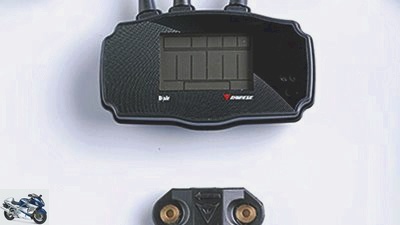
plant
In the case of the newer generation of airbags, the motorcycle is wired to a transponder. If the control module detects an accident scenario, the airbag in the driver’s clothing, which is wirelessly coupled to the system, is triggered by cold gas generators.
It is crucial that motorcyclist airbags recognize an accident scenario in fractions of a second and are triggered reliably and at lightning speed. The providers rely on either mechanical or electronic systems. The advantages and disadvantages at a glance.
Rip cord: The most favorable principle for triggering an airbag housed in clothing. A spiral cable is firmly connected to the motorcycle. If the driver separates from the vehicle in an accident, a CO2 cartridge is unlocked and compressed gas flows into the air chamber. ADAC crash tests showed that tightening the leash wasted valuable time.
Transmitter-receiver: In the case of the newer generation of airbags, the motorcycle is wired to a transponder. If the control module detects an accident scenario, the airbag in the driver’s clothing, which is wirelessly coupled to the system, is triggered by cold gas generators (Bering, Dainese). This means that the airbag can also be triggered in the event of a collision where the driver and motorcycle do not initially separate. Ducati also offers the Multistrada with the Dainese airbag as an option.
Integrated control: In professional racing, airbag suits from Alpinestars and Dainese established, in which the control electronics including the pyrotechnic release unit are in the suit. Various sensors and complex software must ensure that an accident is detected in good time. Alpinestars is now offering this release system to road riders for the first time.
Alpinestars Tech-Air
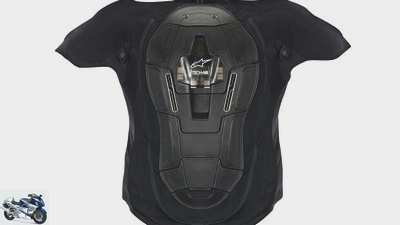
plant
Alpinestars Tech-Air.
Alpinestars Tech-Air
Info: Alpinestars, Tel. 00 39/04 23/52 86, www.alpinestars.com;
Description: Airbag vest with integrated electronic control unit; Power supply via lithium-ion battery with a standby time of approx. 25 hours;
Protective equipment: Airbag for shoulders, chest, upper abdomen, back and kidney area; Hard shell back protector; Joint protectors are housed in separately available Valparaiso or Viper textile jackets;
Prices: Tech-Air vest 1199.95 euros plus biennial maintenance costs 199.95 euros, can be combined with textile jackets Valparaiso 649.95 euros or Viper 349.95 euros;
Conclusion: Easy to use and quick response time. However, the Alpinestars Tech-Air offers little protection for the neck / neck area.
Bering Protect Air
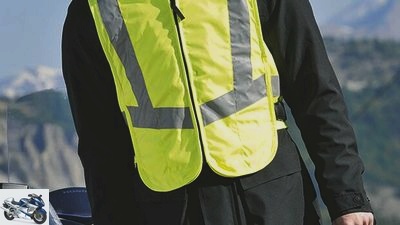
plant
Bering Protect Air.
Bering Protect Air
Info: Bering, Tel. 00 33/1/34 80 39 00, www.bering.fr/airbag;
Description: Airbag overt vest with electronic control module on the motorcycle; Can be coupled with a second airbag vest for the pillion passenger; Power supply for the gas generators in the vest via a battery with a standby time of approx. One year;
Protective equipment: airbag for chest, neck / neck and back, CE back protector;
Prices: From 899 euros plus installation and extra costs for annual service; currently only available in France, import via www.shark-helmets.com z. Currently in preparation;
Conclusion: Complex installation, but should remain under 1000 euros as a complete set. Fast release time.
Dainese D-Air street
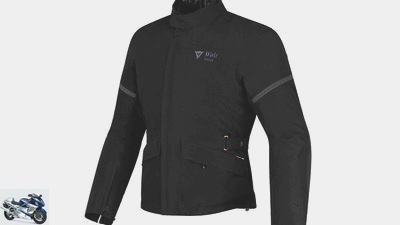
plant
Dainese D-Air street.
Dainese D-Air street
Info: Dainese, Tel. 0 89/35 82 72 70, www.dainese.com;
Description: Airbag over-vest or textile jacket with electronic control module on the motorcycle; Coupling with a second airbag for the passenger possible; Power supply with approx. 30 hours standby time;
Protective equipment: Airbag for the chest, collarbones and back. D-Air-Street jacket equipped with joint protectors; CE back protector can be retrofitted;
Prices: D-Air Street vest 799 euros, D-Air Street Gore-Tex jacket 1599 euros, M-Kit control unit 499 euros;
Conclusion: Elaborate initial installation on the motorcycle, expensive overall package. It offers extensive protection and a fast response time.
Hero Air Vest
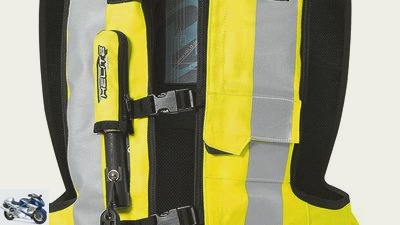
plant
Hero Air Vest.
Hero Air Vest
Info: Held, Tel. 0 83 21/6 64 60, www.held.de;
Description: Airbag vest with pull cord release for attachment to the motorcycle; Airbag textile jacket and leather suit in preparation;
Protective equipment: Airbag for neck / neck, collarbones, chest, ribs, back and tailbone, CE tailbone and back protector, chest protector can be retrofitted;
Prices: Vest in black / neon yellow from 549.95 / 599.95 euros, replacement CO2 cartridge from 24.95 euros, replacement release belt 39.95 euros;
Conclusion: Extensive air cushioning, the purely mechanical activation of which takes a long time compared to electronic systems.
Helite Turtle
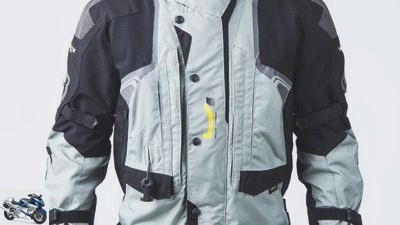
plant
Helite Turtle.
Helite Turtle
Info: Helite, Tel. 01 76/99 79 24 99, www.helite-motorradjacken.de;
Description: Airbag over-vest, textile or leather jacket with pull cord release for attachment to the motorcycle;
Protective equipment: Airbag for the neck / neck, collarbones, chest, ribs, back and tailbone; Turtle vests with hard shell back protector; Jackets with additional CE joint protectors;
Prices: Vest from 449 euros, textile jacket 699 euros, leather jacket 799 euros, replacement CO2 cartridge 22 euros;
Conclusion: Extensive airbag collection with extensive padding but a long deployment time.
Hit air airbag system
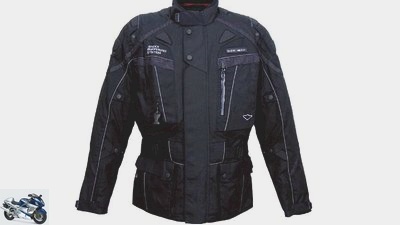
plant
Hit Air Airbag System.
Hit Air Airbag System
Info: Hit Air Protection, Tel. 03 38 41/4 44 50, www.hit-air.de;
Description: Airbag vest or textile jacket with pull cord release for attachment to the motorcycle;
Protective equipment: Airbag for the neck / neck, collarbones, chest, ribs, back, loin and sacrum; Jacket with additional CE joint protectors; CE back protector optionally available;
Prices: Vest 399 euros (also available as a children’s model for 329 euros), textile jacket 499 euros, replacement CO2 cartridge 19 euros;
Conclusion: Lush air cushion that reaches down from the cervical spine to the tailbone. However, with the purely mechanically controlled system, significant time reductions have to be accepted.
Moto airbag MAB V-2.0
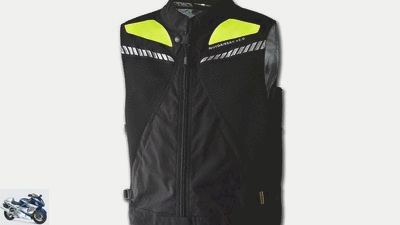
plant
Moto airbag MAB V-2.0.
Moto airbag MAB V-2.0
Info: D.P.I. Safety, Tel. 00 39/02/9 05 38 06, www.motoairbag.com;
Description: Airbag vest with pull cord release for attachment to the motorcycle;
Protective equipment: Airbag for neck, back, tailbone, optionally also available with chest and rib cover;
Prices: “Standard” vest (back only) from 399 euros, “Completto” (back and chest) from 699 euros;
Conclusion: The Motoairbag vest with its extensive back and thorax air cushioning meets the current airbag protector standard EN 1621-4, but like all other rip cord systems, this vest does not achieve the response time of electronically controlled airbags.
Spidi Neck DPS
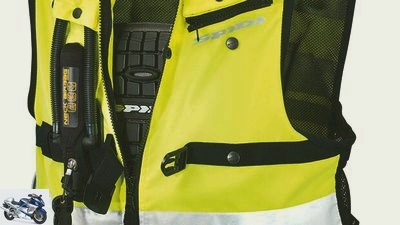
plant
Spidi Neck DPS.
Spidi Neck DPS
Info: Spidi Sport, Tel. 00 39/04 44/43 64 11, www.spidi.com;
Description: Airbag vest with pull cord release for attachment to the motorcycle;
Protective equipment: Airbag as a neck / ruff;
Price: 429.90 euros;
Conclusion: Spidi’s airbag vest focuses on protecting and stabilizing the neck. Above all, it is intended to counteract an overstretching or compression of the cervical spine. However, with this mechanically controlled airbag unit, too, time reductions have to be accepted. Other important body regions such as the chest or back are completely left out and have to be protected conventionally.
Alpinestars Tech-Air Racing
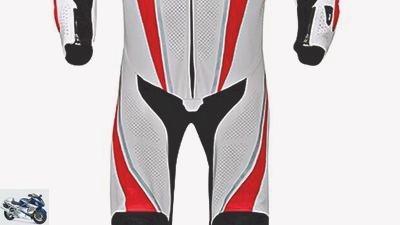
plant
Alpinestars Tech-Air Racing.
Alpinestars Tech-Air Racing
Info: Alpinestars, Tel. 00 39/04 23/52 86, www.alpinestars.com;
Description: one-piece racing leather suit with integrated airbag;
Protective equipment: Airbag pads for shoulders, back, torso and hips as a supplement to CE joint and back protectors;
Price: 6000 euros;
Conclusion: Professional material that is purely tailored to the racetrack and is also used by MotoGP riders.
Dainese D-Air Racing
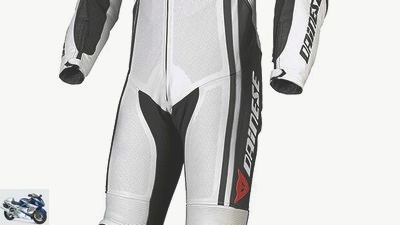
plant
Dainese D-Air Racing.
Dainese D-Air Racing
Info: Dainese, Tel. 0 89/35 82 72 70, www.dainese.com;
Description: one-piece racing leather suit with integrated airbag;
Protective equipment: Airbag pads for shoulders, collarbones and upper chest as a supplement to CE joint and back protectors;
Price: 2899 euros;
Conclusion: Airbag system tailored to typical racing crashes – ideal for amateur athletes, but not on the road.
Interview with Ruprecht Muller / ADAC

ADAC
Ruprecht Mueller.
“The first 100 milliseconds are crucial!”
Ruprecht Muller is the motorcycle expert of the automobile club at the ADAC technical center in Landsberg / Lech
Airbags have been in cars for decades. Why does the airbag on the motorcycle take hold so slowly??
The comparatively hesitant use has various reasons. Above all, the wide variety of possible accident constellations and processes makes optimal coordination in motorcycle accidents difficult. The greatest achievement in the development of modern, electronically controlled airbag clothing is likely to be found in the stored algorithms. Of course, it should also be noted that possible false activations carry a high risk of driving errors.
In addition to the systems in or for the driver’s equipment, there has so far only been an airbag housed in the motorcycle for the Honda Gold Wing 1800. Can it do more than an airbag in the driver’s equipment?
In 2006, the first vehicle-based, large-volume airbag was used at the Honda Gold Wing. In the ADAC crash test, with a volume of around 150 liters, it pushed itself between the opposing vehicle and the driver and showed a very good effect at 70 km / h. Now the Gold Wing has some special features that make it easier to use the airbag on the vehicle. These include, above all, the mass, the integration of the driver and the space available to accommodate the airbag module. This design can therefore only be transferred to other types of motorcycles to a limited extent.
What are the special features of the new airbag vests and jackets??
The first motorcycle airbags, some of which have been available for almost 15 years, had or have release mechanisms with ripcords. The Dainese airbag vest with electronic control, which has been available for three years, and the new Alpinestars model announced for 2015, offer faster operational readiness for protection. When analyzing high-speed recordings of a crash test with a side impact on a car, it becomes clear that the first 100 milliseconds are crucial. The earlier the sensors give the corresponding signal and the faster the electronics detect a crash, the higher the probability that the full protective effect of the airbag will be available in the first, but usually most violent, impact of the driver’s body. The release and inflation times must therefore be as short as possible. Tests with rip cord systems have shown that they do not come close to the electronic controls in terms of release speed.
Which areas of the body must be covered by the airbag??
From ADAC accident research, which is primarily based on data from ADAC air rescue, we know that the upper body, i.e. the chest and back, was damaged in almost 20 percent of motorcycle accidents with the most serious and fatal injuries to the driver. The airbag vests must therefore cover these areas.
What else should airbags do in the future??
From our point of view, a better stabilization of the cervical spine by means of a special collar airbag is primarily desirable. The protective effect of the airbags could also be expanded elsewhere. Here, of course, the aspects of comfort and economy must be taken into account so that market penetration is not made more difficult.
Conclusion
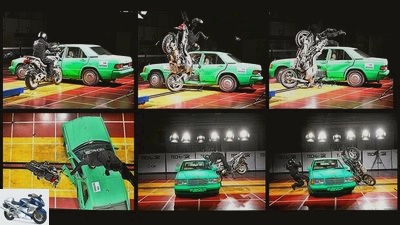
Photos: alpinestars
Chest, neck, shoulders and back: These are essentially the areas of the body where an airbag is supposed to minimize the severity of injuries in the event of a fall.
Alpinestars has taken a decisive step with Tech-Air: simple handling and a quick release mechanism speak for themselves. Dainese attracts hobby athletes with a high-tech airbag combination. Classic rip cord systems, on the other hand, are usually overtaken by the reality of accidents very quickly.
Related articles
-
Product test: airbag systems for clothing
ADAC 14th pictures ADAC 1/14 Neck load test: This is how it looks when the dummy swings with the upper edge of the helmet against the ground without…
-
Personal protective equipment for motorcyclists – advice
Image: Manufacturer clothing Personal protective equipment for motorcyclists – advice Buying advice: personal protective equipment for bikers This should…
-
Market overview 2018 – Airbag clothing for motorcyclists
Alpinestars 35 pictures Alpinestars 1/35 Alpinestars Viper Tech-Air prices: 399.95 euros plus Street Air vest 1199.95 euros. Alpinestars 2/35 Alpinestars…
-
Universal airbag vests for motorcyclists
manufacturer 12th pictures Alpinestars 1/12 Alpinestars Tech-Air 5: Price not yet known (example image). Airbag vest that can be worn under any textile…
-
Buying advice for motorcycle navigation systems and apps for motorcycle tours
jkuenstle.de 15th pictures Garmin 1/15 Garmin Zumo 390 LM, 449 euros – purchase tip in MOTORRAD 18/2015: Except for the poor navigation result on the…
-
Presentation of airbag jackets
counselor technology & future Presentation of airbag jackets Presentation of airbag jackets THE AIR IS CLEAN Some clothing manufacturers try to reduce…
-
Buse airbag vest: New protective vest with rip cord system
Security campaign Consideration has right of way manufacturer clothing Buse airbag vest: New protective vest with rip cord system Buse airbag vest New…
-
Testing Bluetooth communication systems for motorcyclists
Dentges 13th pictures MPS studio 1/13 Nolan N-Com. MPS studio 2/13 Probiker KX4 Z-Link. MPS studio 3/13 Schuberth SRC system. MPS studio 4/13 Shark…
-
Buying advice for cars for motorcycle transport
archive 23 pictures archive 1/23 Although the motorcycle could also be dragged into this family carriage, it is also more convenient: We are presenting…
-
Held In & Motion airbag vest – security to clip in and by subscription
Tobias Burger 10 pictures hero 1/10 Clothing specialist Held has worked with In&Motion added a new supplier of airbag vests to its portfolio. hero 2/10…